Found a total of 10000 related content

How to use service containers in Laravel
Article Introduction:Laravel's service container implements dependency injection by automatically resolving class dependencies, such as automatically injecting UserService when type prompts in the controller; 2. The interface can be bound to a specific implementation, such as binding the PaymentGateway interface to the StripePaymentGateway class to improve decoupling and testability; 3. Use singleton method to ensure that a certain class, such as CacheManager, only generates a single instance in the entire application; 4. Use contextualbindings to inject different implementations into different controllers, such as InvoiceController uses Stripe, and ReceiptController
2025-09-06
comment 0
626

A Practical Guide to Java 17 Features
Article Introduction:Java17 is a long-term supported version that brings safer, concise and efficient code improvements. 1. Use sealed class to control the inheritance of the class, explicitly allowable subclasses through permits, and require the subclass to be marked as final, sealed or non-sealed; 2. Switch pattern matching becomes the standard, supporting directly declaring variables and type matching in the case, and combining sealed class to achieve exhaustive inspection; 3. Record class provides concise immutable data carrier syntax, automatically generates constructors, getters, equals, hashCode and toString, supporting custom methods and compact constructor verification; 4.instanceof
2025-08-06
comment 0
509
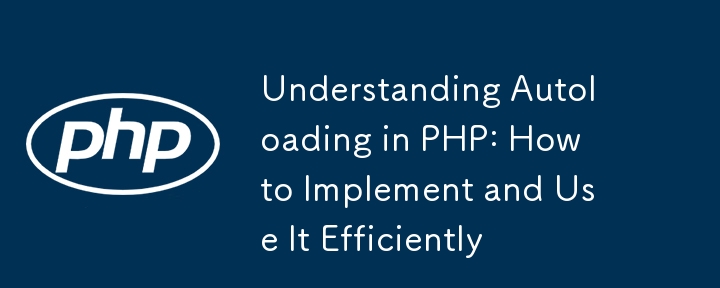
Understanding Autoloading in PHP: How to Implement and Use It Efficiently
Article Introduction:Autoloading in PHP: Concept and Implementation
Autoloading is a mechanism in PHP that automatically loads classes when they are needed, without requiring an explicit include or require statement for each class file. It helps streamline code org
2025-01-01
comment 0
712
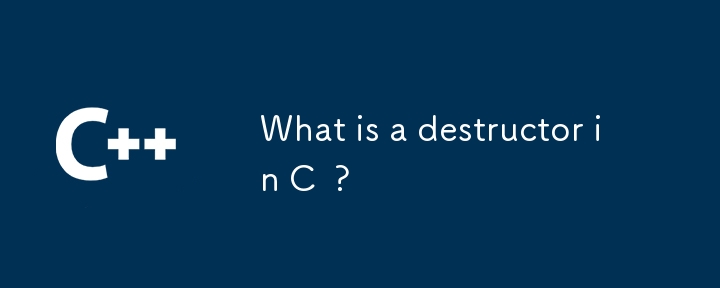
What is a destructor in C ?
Article Introduction:The destructor in C is a special member function that is automatically called when an object is out of scope or is explicitly deleted. Its main purpose is to clean up resources that an object may acquire during its life cycle, such as memory, file handles, or network connections. The destructor is automatically called in the following cases: when a local variable leaves scope, when a delete is called on the pointer, and when an external object containing the object is destructed. When defining the destructor, you need to add ~ before the class name, and there are no parameters and return values. If undefined, the compiler generates a default destructor, but does not handle dynamic memory releases. Notes include: Each class can only have one destructor and does not support overloading; it is recommended to set the destructor of the inherited class to virtual; the destructor of the derived class will be executed first and then automatically called.
2025-07-19
comment 0
457
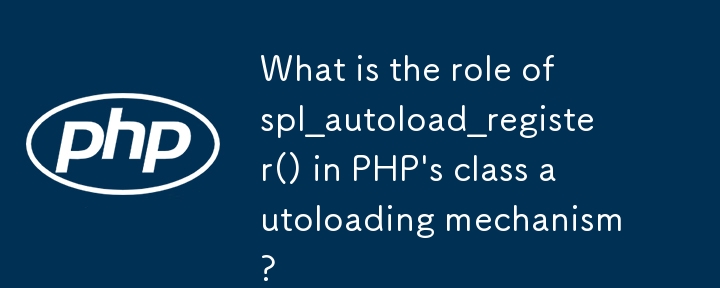
What is the role of spl_autoload_register() in PHP's class autoloading mechanism?
Article Introduction:spl_autoload_register() is a core function used in PHP to implement automatic class loading. It allows developers to define one or more callback functions. When a program tries to use undefined classes, PHP will automatically call these functions to load the corresponding class file. Its main function is to avoid manually introducing class files and improve code organization and maintainability. Use method is to define a function that receives the class name as a parameter, and register the function through spl_autoload_register(), such as functionmyAutoloader($class){require_once'classes/'.$class.'.php';}spl_
2025-06-09
comment 0
418

PHP dynamically generate drop-down menu: How to retain the selected state after the form is submitted
Article Introduction:This article details how to ensure that the drop-down menu can automatically retain its previously selected values when PHP dynamically generates HTML drop-down menus. By modifying the PHP function to receive and compare the submitted selected values with each option value in the database, adding selected attributes to the matching options significantly improves the user experience and avoids the trouble of data loss and repeated selections.
2025-08-20
comment 0
984

Is __construct considered a php function?
Article Introduction:__construct is a constructor of a class in PHP, not a normal function, it is automatically executed when an object is created. It is used to initialize object properties or set dependencies, does not require manual calls, can accept parameters, and replaces the construction method of the same name class in PHP4. For example, classUser{publicfunction__construct(){echo"Usercreated!";}} automatically outputs information when creating an object. The difference between __construct and ordinary functions is that it is automatically executed, cannot be called manually, used for initialization, and has no return value. In addition, it can take parameters such as classProduct{private$na
2025-07-22
comment 0
900
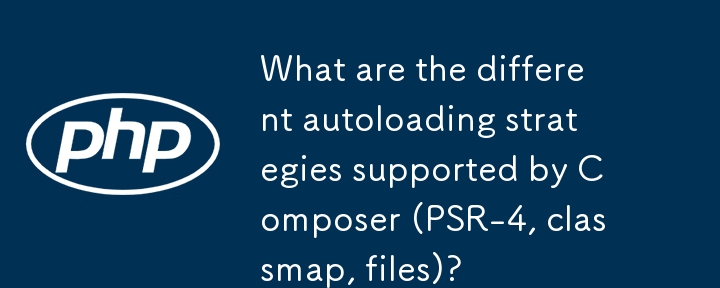
What are the different autoloading strategies supported by Composer (PSR-4, classmap, files)?
Article Introduction:Composer's automatic loading strategies are mainly three: PSR-4, classmap and files. 1. PSR-4 is suitable for modern PHP projects that follow namespace specifications. It automatically loads by mapping namespaces to directories, supports subdirectories and does not need to list files manually; 2. classmap is used to load classes that do not comply with PSR-4 naming specifications, such as legacy code or multi-class files. Composer will scan the mapping table of the specified directory to generate class names to paths, and needs to run composerdump-autoload after adding or renaming the class; 3. files are used to explicitly include PHP files that need to be loaded unconditionally at each request, suitable for defining global functions,
2025-08-12
comment 0
244

What are dynamic proxies in Java?
Article Introduction:Dynamic proxy is used in Java to create proxy objects that implement a specific interface at runtime. Its core is implemented through the java.lang.reflect.Proxy class and the InvocationHandler interface. The specific steps are: 1. Define the interface; 2. Create a real object to implement the interface; 3. Write an InvocationHandler to handle method calls; 4. JVM automatically generates proxy classes and intercepts method calls. Common application scenarios include logging, security checking, performance monitoring, and testing simulation. Dynamic proxy has problems such as only supporting interfaces (default), slight performance overhead caused by reflection, and increased debugging complexity. Example shows how to use LoggingHandler
2025-07-12
comment 0
404

Composer: The Key to Building Robust PHP Applications
Article Introduction:Composer is a key tool for building robust PHP applications because it simplifies dependency management, improves development efficiency and code quality. 1) Composer defines project dependencies through composer.json file and automatically downloads and manages these dependencies. 2) It generates a composer.lock file to ensure that the dependency version is consistent and automatically loaded through vendor/autoload.php. 3) Examples of usage include basic usage such as adding log libraries, as well as advanced usage such as version constraints and environment variable management. 4) Common error debugging techniques include handling dependency conflicts and network problems. 5) Performance optimization suggestions include using composer.lock file and optimizing automatic loading.
2025-04-12
comment 0
533

Introduction to Java Records for Immutable Data
Article Introduction:JavaRecords is a feature introduced by Java16 to simplify the definition of immutable data model. It is a special class that automatically generates constructors, getter methods, equals(), hashCode() and toString() methods for fields to reduce redundant code; it is suitable for use in scenarios such as data transfer objects (DTO), JSON serialization model classes, function return packaging, etc.; it is not suitable for situations where complex logic, inheritance interfaces, field default values or verification logic are required; verification logic can be added through a compact constructor, such as checking non-negative age; Record naturally supports immutability, improves development efficiency and code readability, and has significant advantages in suitable scenarios.
2025-07-14
comment 0
922
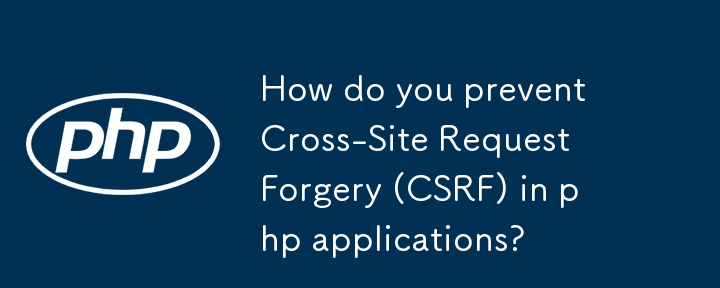
How do you prevent Cross-Site Request Forgery (CSRF) in php applications?
Article Introduction:To prevent CSRF attacks in PHP applications, you need to use anti-CSRF tokens, verify HTTP methods, set SameSiteCookie attributes, and consider using a framework that automatically handles CSRF. 1. Use anti-CSRF token: the server generates a unique token and associates it with the user session, adds a hidden field to the form to submit the token, and verify whether the token matches when submitting; 2. Verify HTTP method: Ensure that sensitive operations are only performed through secure methods such as POST, and rejects unanticipated GET requests; 3. Set SameSiteCookie attribute: Configure SameSite=Strict or Lax through session_set_cookie_params to prevent cross-site requests
2025-07-13
comment 0
873

What are the different autoloading strategies (PSR-0, PSR-4, classmap, files)?
Article Introduction:PHP's automatic loading methods include PSR-0, PSR-4, classmap and files. The core purpose is to implement automatic loading of classes without manually introducing files. 1. PSR-0 is an early standard, and automatically loads through class name and file path mapping, but because the naming specifications are strict and the support for underscores as directory separators have been rarely used; 2. PSR-4 is a modern standard, which adopts a more concise namespace and directory mapping method, allowing a namespace to correspond to multiple directories and does not support underscore separation, becoming the mainstream choice; 3. classmap generates a static mapping table of class names and paths by scanning the specified directory, which is suitable for legacy code that does not follow the PSR specification, but new files need to be regenerated and large directories
2025-06-20
comment 0
1039
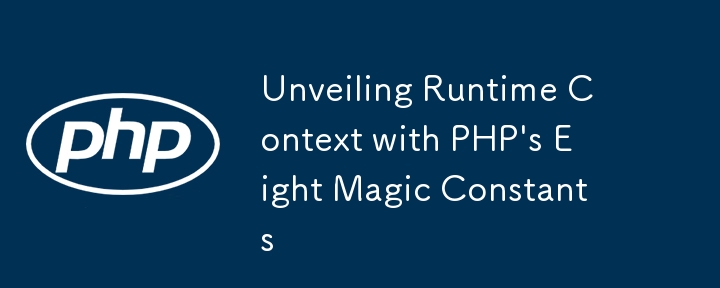
Unveiling Runtime Context with PHP's Eight Magic Constants
Article Introduction:PHP has eight magic constants that change automatically according to usage location for debugging, logging, and dynamic functions. 1.LINE returns the current line number, which is convenient for positioning errors; 2.FILE returns the absolute path of the current file, which is often used to include files or log records; 3.DIR returns the directory where the current file is located, which is recommended for path reference; 4. FUNCTION returns the current function name, which is suitable for function-level debugging; 5.CLASS returns the current class name, which contains namespace, which is suitable for class context recognition; 6.TRAIT returns the current trait name, which points to the trait itself even when called in the class; 7.METHOD returns the class name and method name of the current method (such as Class::method), which is used for tracing
2025-07-30
comment 0
632

Imagick vs GD
Article Introduction:Key Points
GD and ImageMagick are both popular PHP image processing libraries. GD is more widely used and ImageMagick is more powerful.
In terms of performance, there is no absolute advantage or disadvantage between the two, and the speed depends on the specific application scenario.
The encoding styles are significant. GD adopts procedural programming, and ImageMagick supports object-oriented programming through the Imagick class.
In addition to these two libraries, there are other options, such as cloud image processing platforms or components that have been integrated into the application.
introduction
In PHP applications, if you need to create thumbnails, apply image filters, or perform other image conversions, you need to use the image processing library. Usually, you'll choose GD or ImageMagick. But which library
2025-02-22
comment 0
1348
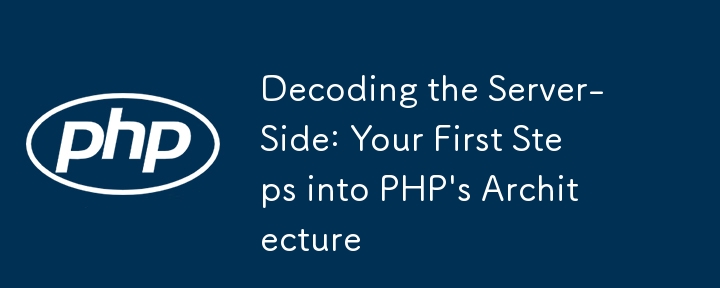
Decoding the Server-Side: Your First Steps into PHP's Architecture
Article Introduction:PHP runs on the server side. When the user requests the page, the server executes the code through the PHP engine and returns HTML to ensure that the PHP code is not seen by the front end. 1. Request processing: Use $_GET, $_POST, $_SESSION, $_SERVER to obtain data, and always verify and filter inputs to ensure security. 2. Separation of logic and display: Separate data processing from HTML output, use PHP files to process logic, and template files are responsible for displaying, improving maintainability. 3. Automatic loading and file structure: Configure PSR-4 automatic loading through Composer, such as "App\":"src/", to automatically introduce class files. Suggested projects
2025-07-27
comment 0
985

How to update plugins manually via FTP
Article Introduction:The most direct reason for manually updating plug-ins is to solve the problem of insufficient permissions or FTP restriction that cannot be automatically updated. The specific operation is divided into four steps: 1. Download the latest plug-in package and prepare the FTP client and login information; 2. Optionally back up the old plug-in folder just in case; 3. Delete or rename the old plug-in folder; 4. Upload the new plug-in folder to the /plugins/ directory and check the activation status in the background. Notes include checking whether the PHP version meets the standards, confirming that the FTP connection is normal, and troubleshooting the website's white screen problem.
2025-09-07
comment 0
678

How to define constructors in PHP?
Article Introduction:In PHP, the constructor is defined by the \_\_construct magic method. 1) Define the \_\_construct method in the class, which will be automatically called when the object is instantiated and is used to initialize the object properties. 2) The constructor can accept any number of parameters and flexibly initialize the object. 3) When defining a constructor in a subclass, you need to call parent::\_\_construct() to ensure that the parent class constructor executes. 4) Through optional parameters and conditions judgment, the constructor can simulate the overload effect. 5) The constructor should be concise and only necessary initialization should be done to avoid complex logic or I/O operations.
2025-05-23
comment 0
681

What is the autoload section in composer.json?
Article Introduction:Composer.json's autoload configuration is used to automatically load PHP classes, avoiding manual inclusion of files. Use the PSR-4 standard to map the namespace to a directory, such as "App\":"src/" means that the class under the App namespace is located in the src/ directory; classmap is used to scan specific directories to generate class maps, suitable for legacy code without namespace; files are used to load a specified file each time, suitable for function or constant definition files; after modifying the configuration, you need to run composerdump-autoload to generate an automatic loader, which can be used in the production environment --optimize or --classmap-
2025-06-12
comment 0
642
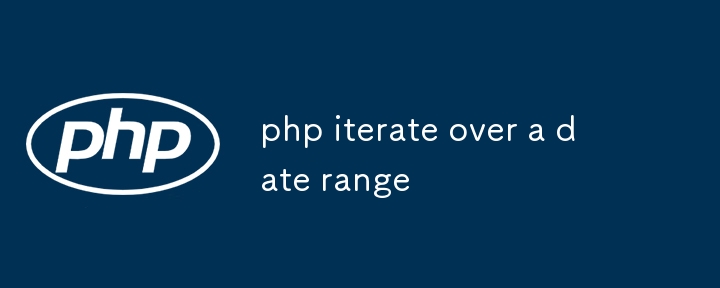
php iterate over a date range
Article Introduction:It is recommended to use the DatePeriod class to traverse date ranges in PHP. 1. The DatePeriod class was introduced from PHP5.3, and date traversal is implemented by setting the start date, end date and interval. For example, generate a date list from 2024-01-01 to 2024-01-05, which does not include the end date by default; 2. If you need to include the end date, you can adjust the end date or set the INCLUDE_END_DATE parameter; 3. The manual loop method can also complete the traversal using the DateTime object and the modify() method, which is suitable for scenarios where step size needs to be flexibly controlled; 4. Pay attention to the time zone problem that should be explicitly set to avoid the system's default time zone affecting the result; 5. PHP automatically handles leap years
2025-07-14
comment 0
177



















